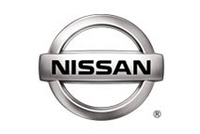The Nissan Manufacturning Story Y'all
 |
Special to The Auto Channel
By Jim Koscs
AIADA Contributing
Editor
Automakers and CEOs collect plenty of awards, some
significant, others little more than advertising or publicity ploys. The
Manufacturing Leadership Award that Nissan Motor Co. Ltd. president and
Chief Executive Officer Carlos Ghosn picked up last month from the Society
of Automotive Engineers (SAE) could definitely be counted among the former.
Nissan, of course, had been building vehicles successfully in
the U.S. for 17 years before Ghosn was brought in to help reverse the
company’s then-ailing fortunes. Ghosn’s vision has certainly
made an impact on the flexibility for which Nissan’s North American
plants are noted. Now, Ghosn is steering U.S. manufacturing operations to
take responsibility for vehicle launches and supplier relations at Nissan
plants in Brazil and Mexico.
By the
Numbers
 |
| An aerial view of Nissan’s Decherd, Tennessee manufacturing plant |
From the first compact pickup truck to roll off the Smyrna,
Tenn. assembly line in 1982 through 2006, Nissan has produced 8.6 million
vehicles in the U.S. Today, Smyrna builds the Altima sedan, coupe and
hybrid, the Maxima sedan, Frontier compact pickup truck, and two mid-sized
SUVs, the Xterra and Pathfinder. Annual capacity is 550,000 vehicles, but
the plant built 465,000 in 2006. Last year, Nissan sales (including luxury
division Infiniti) declined 5.3 percent compared to
2005.
Nissan opened an engine plant in Decherd, Tenn. in 1997, and
today that facility assembles all engines – 4-cylinder, V-6 and V-8
– for Nissan vehicle production in the U.S. The plant handles
crankshaft forging and next year will add cylinder block casting, as
well.
With the opening of its second vehicle assembly plant, in
Canton, Miss. just over four years ago, Nissan introduced its
new-generation Quest minivan for 2004 and then its first full-size pickup
truck, the Titan, and its first full-size SUVs, the Nissan Armada and
Infiniti QX56. Canton also builds the Altima sedan. Annual capacity stands
at 400,000 vehicles, but last the year the plant built 278,000 owing to low
demand.
Adjusting to market demand, Nissan offered voluntary buyouts
to employees at Smyrna and Decherd, and 775 accepted. That reduced factory
employment at Nissan’s three U.S. plants to
11,050.
Efficiency Expert
Nissan is considered a highly efficient builder in the U.S.
Although the company did not participate in the latest Harbour Report, this
influential industry productivity report card estimates that Nissan may be
nearly even with efficiency champion Toyota. According to the 2007 Harbour
Report, Toyota took a combined 29.93 labor hours to build vehicles in the
U.S. last year. Harbour estimated Nissan at 29.97 labor hours per vehicle.
That figure, if accurate, would have put Nissan ahead of second-place
Honda, which scored at 31.63 labor hours.
Nissan’s explanation for not participating in the
Harbour Report could itself be considered a nod to productivity. "Making
competitive analyses among the various OEMs and in such a complex industry
is becoming increasingly difficult to do, and collecting comparison
information solely for The Harbour Report study has become a costly and
time-consuming exercise," said Nissan spokesperson Julie Lawless. She added
that Nissan will continue to work with Harbour Consulting for specific,
critical benchmarking needs.
Harbour research analyst Greg Gardner elaborated on the
estimate for Nissan, pointing to plant flexibility and supplier
collaboration as particular company strengths. "What really distinguishes
Nissan from Honda and Toyota is how aggressively it integrates suppliers,"
he said. One example is how Nissan purchases more sub-assemblies –
such as complete front fascias, outfitted instrument panels and headliners
– than its rivals do. He explained that this practice also has a
positive effect on overall productivity.
Quality Problems and Solutions in
Canton
Canton’s ambitious vehicle launch plan – five
vehicles over two years – was marred by quality problems that
manifested in low consumer satisfaction scores. Both Nissan and
Harbour’s Gardner say the problems are being addressed. "We’ve
made great progress where quality is concerned, but we never forget that
it’s an ongoing activity and never complete," said Doug Betts, Nissan
senior vice president for total customer satisfaction.
Nissan has over the past few years hired several top-level
manufacturing, quality and supplier management veterans from Toyota and
Honda. Betts joined Nissan three years ago after 10 years with Toyota. (See
"One on
One with Doug Betts, Senior VP of Nissan" by Marty Bernstein.) He is,
however, quick to spread credit around. "Whether an employee at Nissan for
one year or 25 years, each and every person deserves credit for the
progress we’ve made where ongoing quality activities are concerned,"
he said.
As evidence of improving quality, Betts pointed to recent
consumer surveys. "In J.D. Power & Associates Initial Quality Survey this
year, Titan’s quality scores showed a big improvement, as did those
for Quest," he said. "Altima sedans built at Canton and Smyrna have been
virtually identical in warranty claims and IQS scores for the last couple
of years."
Quest may have gotten better – and its revised
instrument panel design has been lauded by critics who blasted the original
"cylindrical" version – but there is still room for improvement,
according to J.D. Power & Associates. In the firm’s index, which
scores overall vehicle mechanical quality on a scale of one to five
"circles," Quest earned 2.5 (below average) while the Toyota Sienna and Kia
Sedona each scored four and the Honda Odyssey earned 3.5 (three is
"average").
Betts also pointed to the Strategic Vision 2007 Total Quality
Index, in which three Nissan vehicles led their segments: Maxima (tied for
medium car with Saturn Aura), Quest (tying for minivan with the Sedona and
Entourage) and Titan (tied for large pickup with Ford F-150). Quest and
Titan are built in the Canton plant, the Maxima in
Smyrna.
6/13/2007 6:39:07 AM


